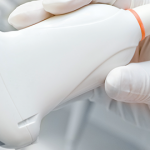NEW YORK (Reuters Health)—Ultrasound guidance does not improve the effectiveness of treat-to-target therapy in rheumatoid arthritis (RA), new findings confirm.
“Incorporating ultrasound information in treatment decisions did not lead to reduced MRI inflammation or less structural damage compared with a conventional treatment strategy,” Dr. Ulf Sundin of Diakonhjemmet Hospital, Oslo, and colleagues write in Rheumatology. “The findings support that systematic use of ultrasound does not provide a benefit in the follow-up of patients with early RA.”1
The goal of RA care today is to treat patients to clinical remission, but these patients may still have subclinical inflammation visible on ultrasound or magnetic resonance imaging, Dr. Sundin and his team note. Two trials of structured ultrasound assessment in patients with early RA did not show a benefit of targeting imaging remission instead of clinical remission, they add, although there was a trend toward the ultrasound groups in both studies showing less radiographic erosive damage.
In the current study, the authors analyzed data from one of these trials, the ARCTIC trial, on 218 participants who had magnetic resonance imaging (MRI) scans at baseline and at least one follow-up MRI.
There were no differences between the ultrasound group and the conventional treat-to-target group in bone marrow edema, synovitis or tenosynovitis based on MRI, which improved for the first year of the study with sustained benefit over the second year. The risk of progression to erosions on MRI was also similar for both groups, at 39% with ultrasound and 33% without ultrasound (P=0.40).
“The MRI results, with no trend towards less joint damage progression in the ultrasound arm, support the conclusions of the primary outcomes of the above mentioned trials—that an ultrasound-guided strategy does not lead to improved treatment outcomes,” Dr. Sundin and colleagues write.
“Our findings support the current treatment recommendations for early RA,” they conclude.
Reference
- Sundin U, Aga AB, Skare Ø, et al. Conventional versus ultrasound treat to target: No difference in magnetic resonance imaging inflammation or joint damage over 2 years in early rheumatoid arthritis. Rheumatology (Oxford). 2020 Jan 30. pii: kez674. [Epub ahead of print]

